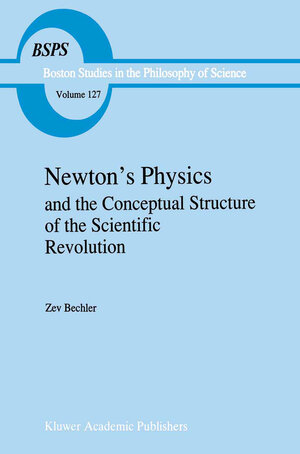
×
![Buchcover ISBN 9789401132763]()
Newton’s Physics and the Conceptual Structure of the Scientific Revolution
von Z. BechlerInhaltsverzeichnis
- I: The Tradition.
- One: Aristotelian and Platonic Conceptions of Explanation.
- Two: Aristotle’s Philosophy of Nature and Theory of Potentiality.
- Three: Plato’s Concept of the Actual and His Philosophy of Nature.
- II: The Logical Revolution.
- Four: The Copernican Harmony.
- Five: Bacon’s Informative Logic.
- Six: Informativity and Paradox: Galileo’s Conception of the Nature of Physical Reality.
- Seven: Descartes’ Informative Logic.
- III: Newton’s Physics and its Critics.
- Eight: Actual Infinity and Newton’s Calculus.
- Nine: Newton’s Logic of Space and Time.
- Ten: Modern Newtonian Historiography and the Puzzle of Newton’s Absolute Space.
- Eleven: Absolute Motion and the Nature of Inertial Forces.
- Twelve: Locke and the Meaning of “Empiricism”.
- Thirteen: Newton’s Invention of the Problem of Induction.
- Fourteen: Circularity and Newton’s Philosophy of Nature.
- Fifteen: Leibniz’s Aristotelian Philosophy of Nature.
- Sixteen: Berkeley’s Aristotelian Critique of Newton’s Physics.
- Epilogue.
- Appendix: Some Basic Ideas in Newton’s Physics.
- Notes.



